White walls and decorated tiles or coloured walls and neutral tiles? Neutral tiling and coloured fittings, or vice versa? Full, bright colours or delicate, pale ones? Choosing a bathroom colour scheme is a tricky question because it is directly correlated to the decor and choice of materials and finishes. This post gives some useful tips for selecting a bathroom colour scheme with no regrets!
One of the most popular current trends: coloured bathroom fittings. Tired of too much minimalism or the anonymous (according to some) black and white, beige and greige, or grey and cream, interior design is banking on colour and even the bathroom becomes a palette that liberates creativity.

Nowadays, choosing the colour of bathroom walls means defining the colour scheme of the entire project and coordinating all the elements in the room coherently, and we must not forget to take into account the finishes and materials involved: wood, marble, stone, metal or glass affect the appearance of the room radically. Colours must therefore be chosen bearing in mind these parameters and assessing how light reflects on them.
There are no right colours for the bathroom: no-one can establish what the best shades are for this room because personal taste, quite rightly, strongly influences choices. However, there are guidelines to avoid exaggerating and creating liaison dangereuse, using a palette that achieves a well-balanced result.
So, how do we choose the colours for the bathroom?
In an orderly manner, making a list of the decorative elements to include and then establishing the priorities according to the project and personal preference.
1 | Materials and finishes for the fittings
Fittings designed for contemporary bathroom decor provide a wide range of customising opportunities: cabinet fronts and doors, shower enclosure frames, bathroom accessories, shelves and complementary items. As said above, there is no limit to interpretations of projects and the choice of wall colours, it all depends on the definition of all the other elements.
If the bathroom décor is to be in neutral shades, for example, the wall colour can be the feature that distinguishes the room. In this way, repainting the walls will be enough to totally renew a bathroom. On the other hand, a composition in strong colours can be the protagonist in a room with neutral walls (as in the photo below).
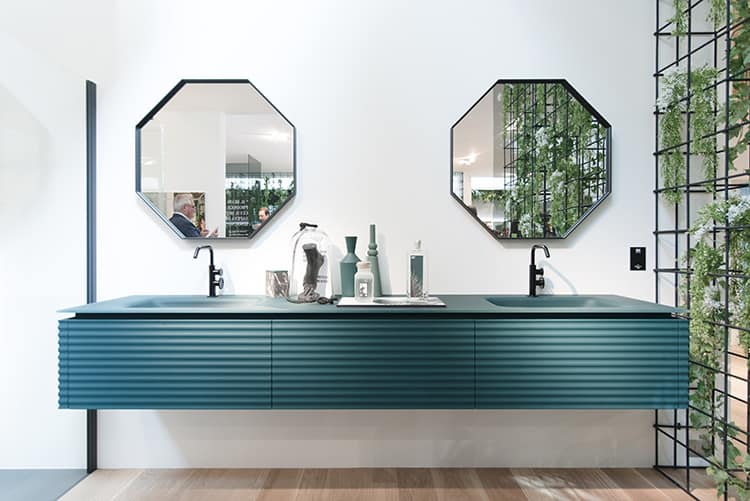
Are marble and industrial style your favourites? Dogma by Aqua is just what you want »
A single collection, infinite styles:
see the brand new Form »
If you prefer neutral tiling and walls, then everything depends on the bathroom fittings: modern, coloured bathroom fittings can distinguish interiors, not just with lacquered finishes (matt, glossy, metallised) but also with patterns and veined marble, or soft touch surfaces such as Fenix Ntm or decorated Corian. Colour does not always have to cover large surfaces, it can be limited to details, accents and subtle shades.

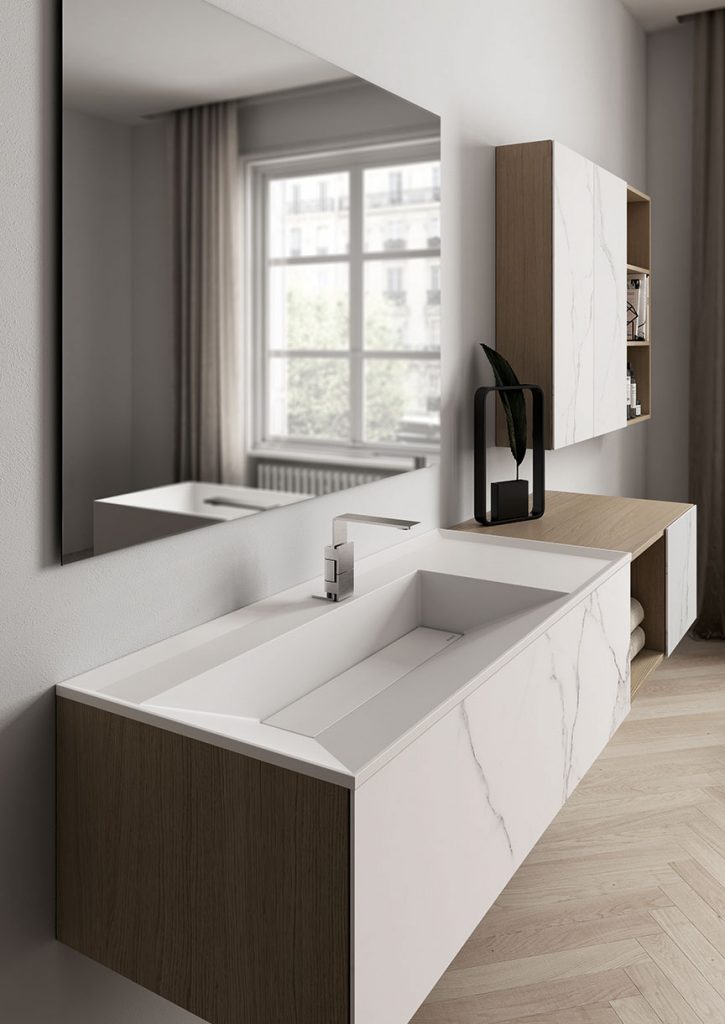
2 | Shower enclosure frames, accessories and taps
All these elements affect the choice of a bathroom colour scheme, especially nowadays when a wide range of different colours is available. For example, recently the finishes for shower enclosure frames have multiplied and can be coordinated with taps and accessories (even with the metallised lacquered finish of cabinets and washbasins).
In this case, it is better to give priority to the metallic touches and details rather than select a bathroom colour with too strong an impact. The photos below show three completely different inspirations: in the first one priority is given to the colour of the taps and metal elements, in the second these elements continue in the washbasin and cabinets, and in the third the cabinet is lacquered with a coloured metal finish.



3 | Bathroom styles
Infinite; the style of the bathroom also influences the choice of colour for the different elements.
Fans of the Nordic style do not go for bright colours, preferring cool shades that are light and luminous (ice or blue grey, for example), matched with pale coloured wood. Those who tend towards a vintage style will appreciate the luminous metal finish and shades of beige, and devotees of the industrial style will probably opt for rigorous lines with contrasting metal elements. A young, easy bathroom could use colour as the distinguishing feature of the room, taking advantage of the variegated palette now at our disposal.

There is a host of trendy options for a modern bathroom: you can choose from shades of green or turquoise, or more neutral colours such as dove grey or sugar paper blue. You can even choose black, or another dark colour, to create a contrasting wall (just one!) behind a light coloured cabinet: it will stand out even more, without appearing heavy.
For a classical bathroom the choice is usually traditional, privileging neutral shades such as beige and grey. To give a personal touch, also in this case you can use a contrasting wall, colour Bordeaux, for example.
The shabby chic style prefers less classical, but nonetheless sober, colours: lavender, sage green and pale blue, usually matched with bathroom fittings in natural materials like wood. Ethnic décor also features similar colours: lilac and moss green.
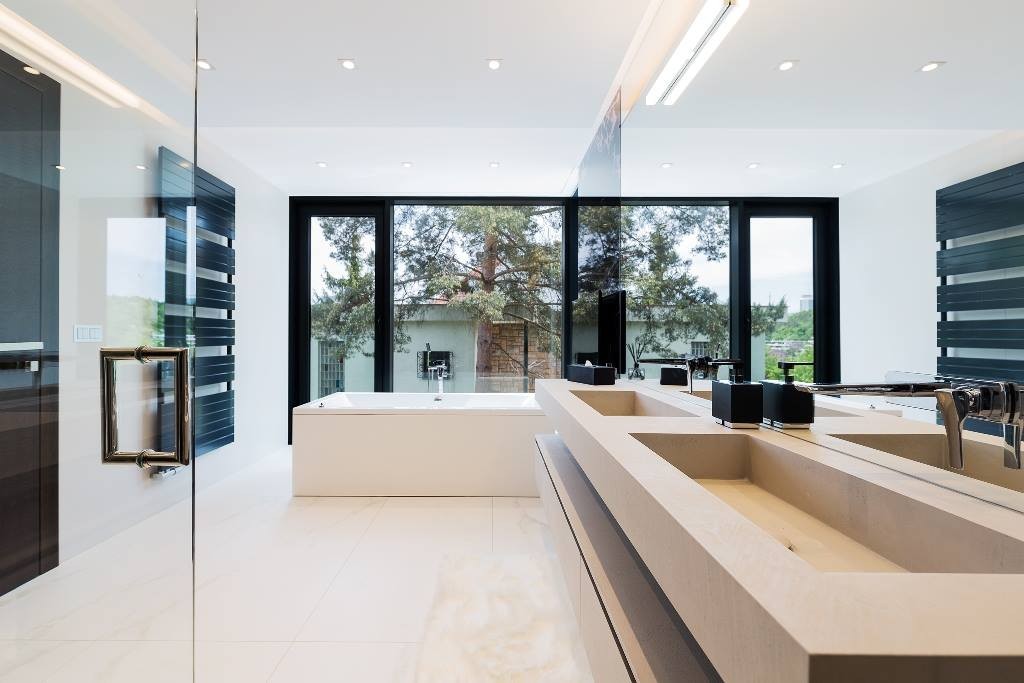
Choosing wall colours for small bathrooms
It is often said that light colours are the best for a small bathroom, but that is not always the case. A contrasting colour, chosen to enhance a single wall, or the shower area, or even the ceiling (why not), can distinguish the bathroom without necessarily detracting from the sensation of space. It is always better to assess the overall effect of the project, including artificial illumination and the impact of natural light.
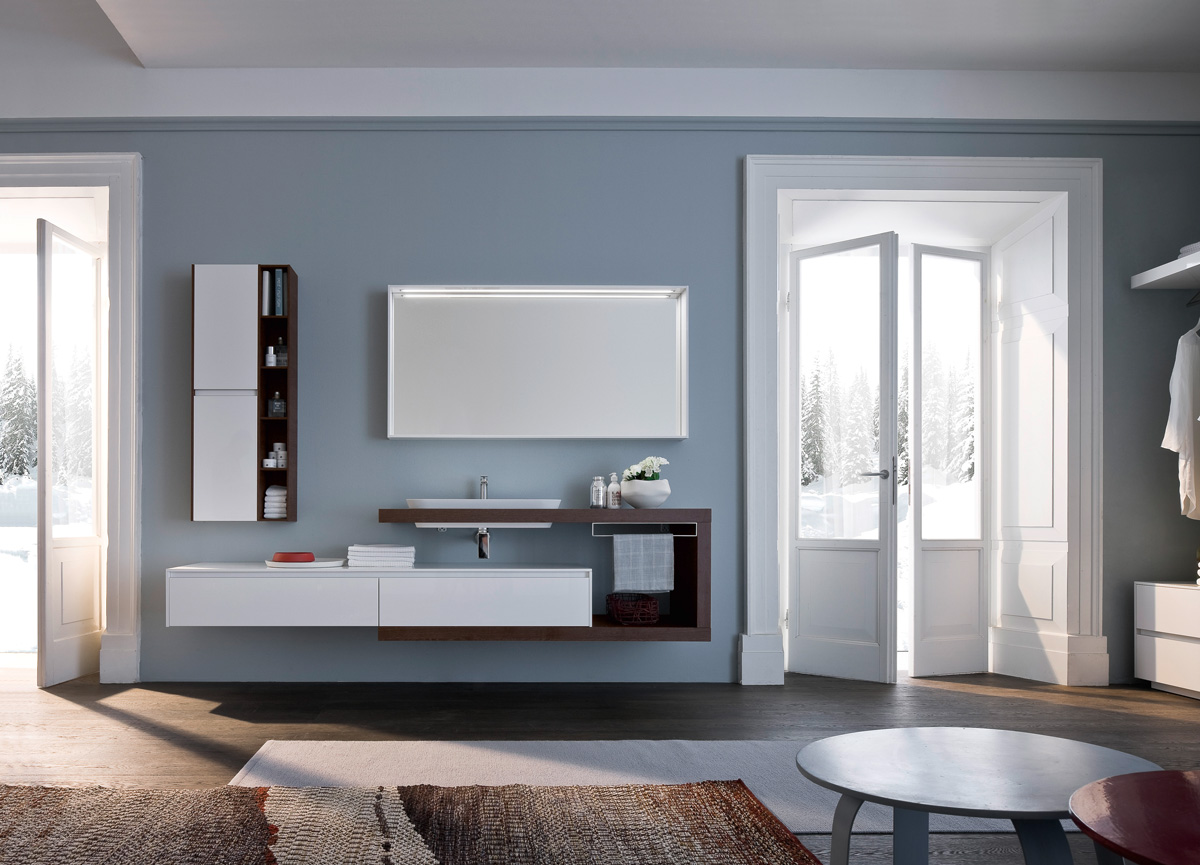

Choosing the bathroom colour scheme, with no regrets!
A universally valid tip is not to follow fashion fads or temporary trends slavishly. Think carefully about your own taste and consider that if a colour is too particular you will probably quickly tire of it.
In any case, if you want to be up-to-date about trends in bathroom colour schemes it can be useful to keep an eye on the most important bathroom fitting trade events such as Cersaie or the Salone del Bagno.


Cover: Photo by Max Di Capua on Unsplash

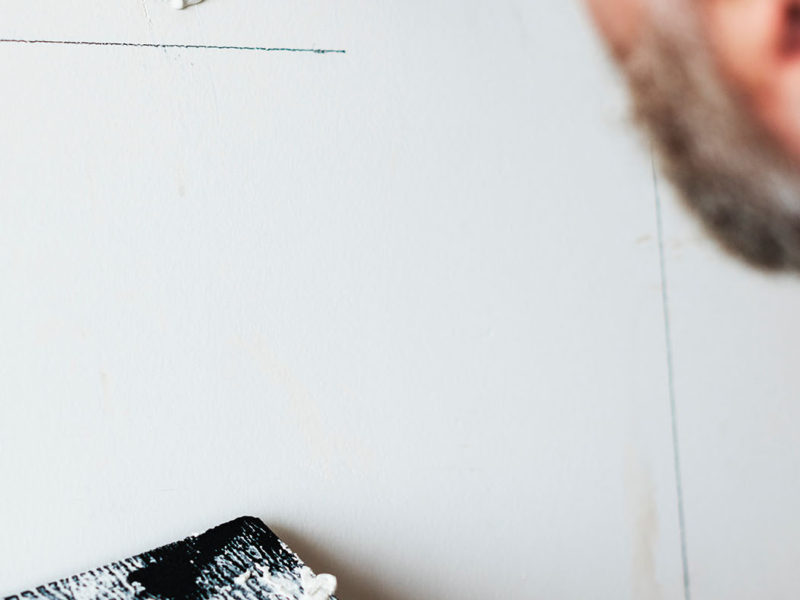
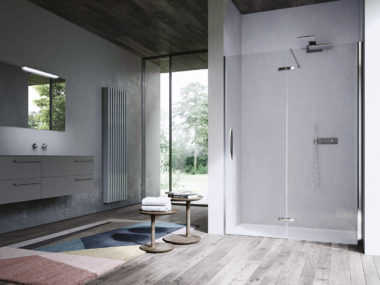






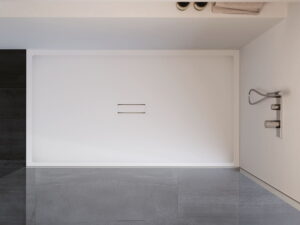
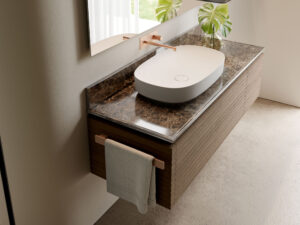

 Necessari
Necessari
 Funzionali
Funzionali
 Statistiche
Statistiche Marketing
Marketing